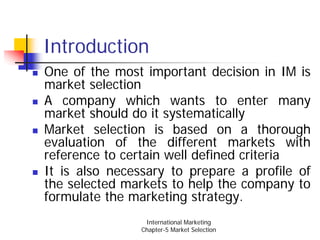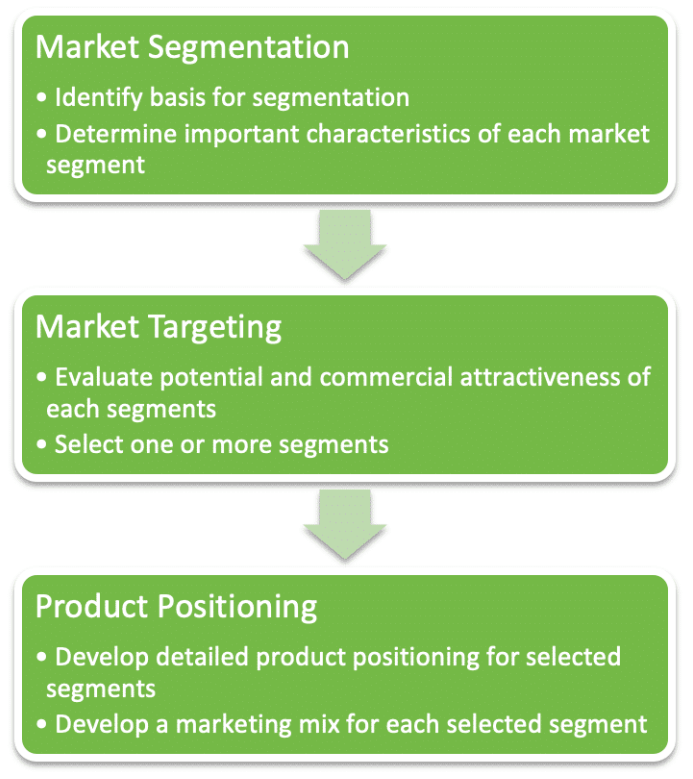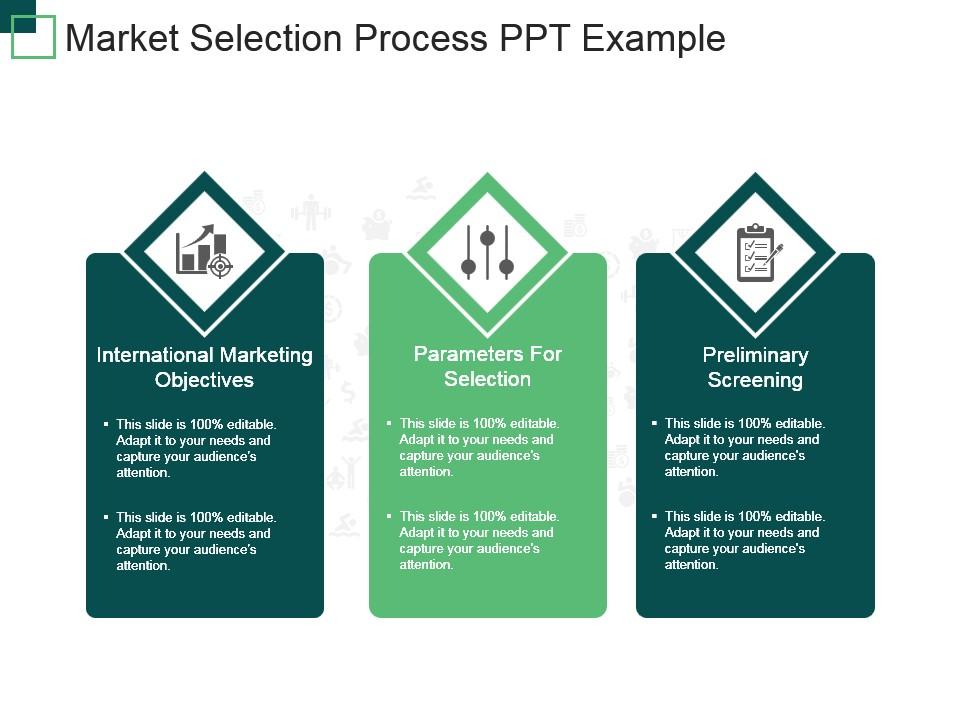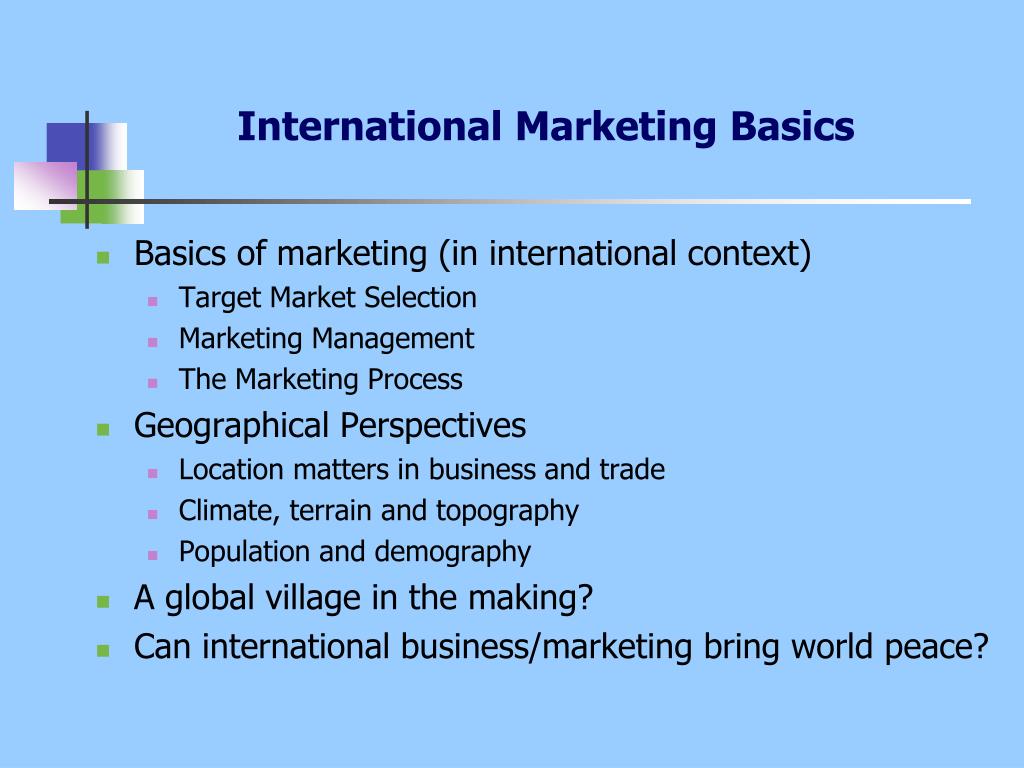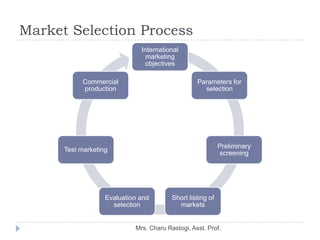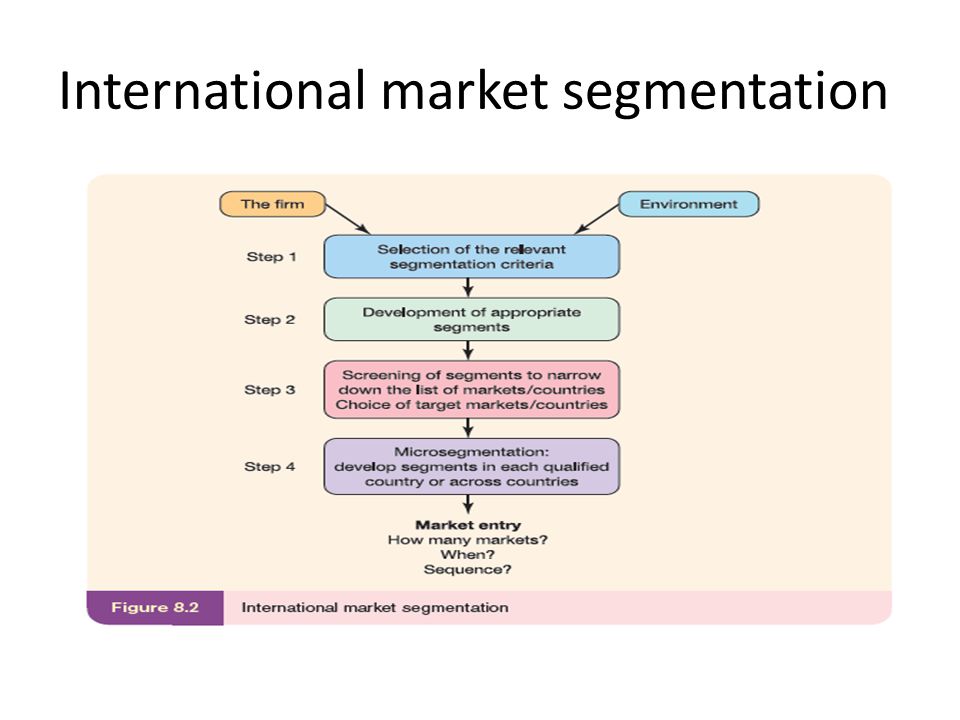The market selection process in international marketing involves the careful evaluation and selection of target markets for a company's products or services. This process is crucial for businesses looking to expand internationally, as it allows them to identify and pursue opportunities that align with their goals and resources.
There are several factors that a company should consider when selecting a target market in the international arena. These include market size, market growth potential, market accessibility, market similarity, market risk, and market attractiveness.
Market size refers to the number of potential customers in a particular market. A larger market size generally means more potential revenue, but it also often means more competition. Market growth potential refers to the expected rate of growth in the market over time. Markets with high growth potential can provide long-term opportunities for businesses, but they may also involve higher risk.
Market accessibility refers to the ease with which a company can enter and operate in a particular market. This can be influenced by factors such as language barriers, cultural differences, and the availability of distribution channels. Market similarity refers to the extent to which a market is similar to the company's domestic market in terms of consumer preferences, purchasing behavior, and cultural norms. Markets that are similar to a company's domestic market can often be easier to enter and operate in.
Market risk refers to the potential for loss or damage to a company's investments in a particular market. This can be influenced by factors such as political instability, economic downturns, and legal and regulatory challenges. Market attractiveness refers to the overall appeal of a market to a company, taking into account all of the above factors as well as the company's own resources and capabilities.
To identify potential target markets, companies often use market research techniques such as market analysis, competitive analysis, and customer analysis. This can involve collecting data on market size and growth potential, studying competitors and their strategies, and understanding the needs and preferences of customers in different markets.
Once a company has identified potential target markets, it can then evaluate and compare them using a variety of tools and techniques, such as market attractiveness analysis, market feasibility analysis, and resource allocation analysis. This process helps the company to prioritize markets and make informed decisions about which ones to pursue.
In summary, the market selection process in international marketing involves the careful evaluation and selection of target markets for a company's products or services. It involves considering a range of factors such as market size, growth potential, accessibility, similarity, risk, and attractiveness, and using market research and analysis to identify and compare potential markets. This process is crucial for businesses looking to expand internationally, as it allows them to identify and pursue opportunities that align with their goals and resources.
